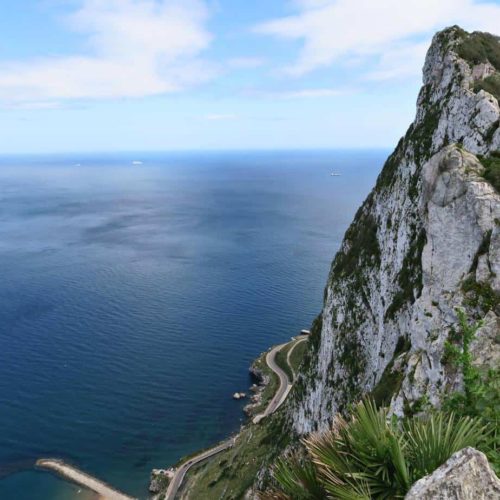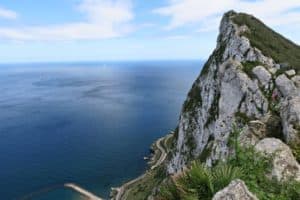It’s only 8 miles across but the transformation from Africa to Europe is far wider – politically, economically, religiously and socially. Nowhere is this more dramatically demonstrated than from the most proximate points – Morocco and Spain. It’s hard to believe that half of the world’s shipping passes through this entrance to the Med, but not hard to understand why the Brits found the “Rock” of Gibraltar such an important strategic site during the era of their Empire and world domination.
I hadn’t realised Gibraltar was so tiny – just 2.6 sq miles, a piffling amount of territory you’d have thought – but in terms of the domination the cannons installed in the Rock have been able to threaten on an unfriendly shipping coming and going from the Med, it’s significance has been indisputable. And still they cling to it – some 96% of the 32,000 locals in a recent poll voted to stay British. Last time I saw that was in the Falklands which we visited a couple of years ago – in Port Stanley the population seems more British than they do in London, they have a statue of Maggie Thatcher in their main street, lest any visitor has doubts.
If it weren’t for the airport, Gibraltar would be an island, but it straddles the neck of the isthmus and driving across it is the only way to get from Spain, back “home” to Britain. And British it appears it will remain since a 1713 Treaty saw the Spanish cede it “in perpetuity” – a term emphasised in the 1950’s as the Brits knocked back General Franco’s efforts to get it back.
These days the airstrip is the landing place for oodles of tourists rather than warplanes and the port is host to cruise ships heading into the Med for their whistle stop tours, rather than the naval base it was in World War Two. The Rock is riddled with tunnels and caverns that were established as the underground fortress for the Allies during that war.
It’s a great place to visit and being able to ride up and around the Rock on our bikes was certainly preferable to walking.




Comments are closed.